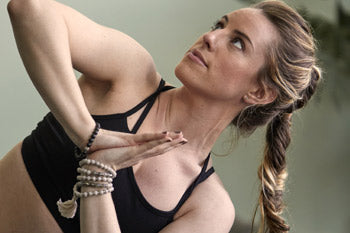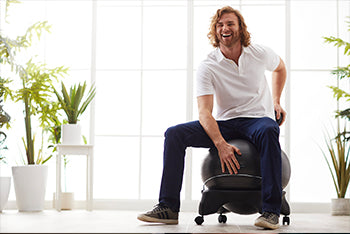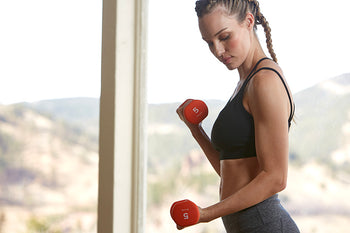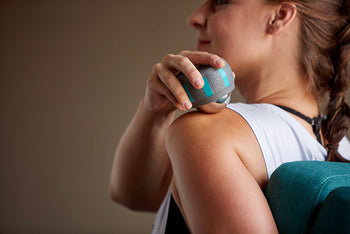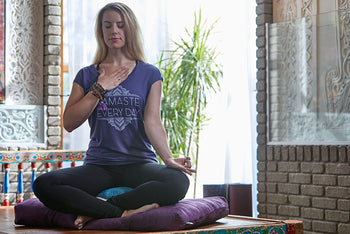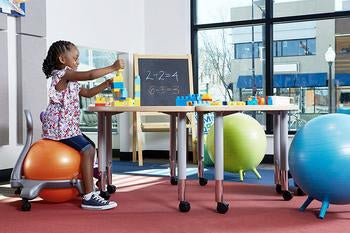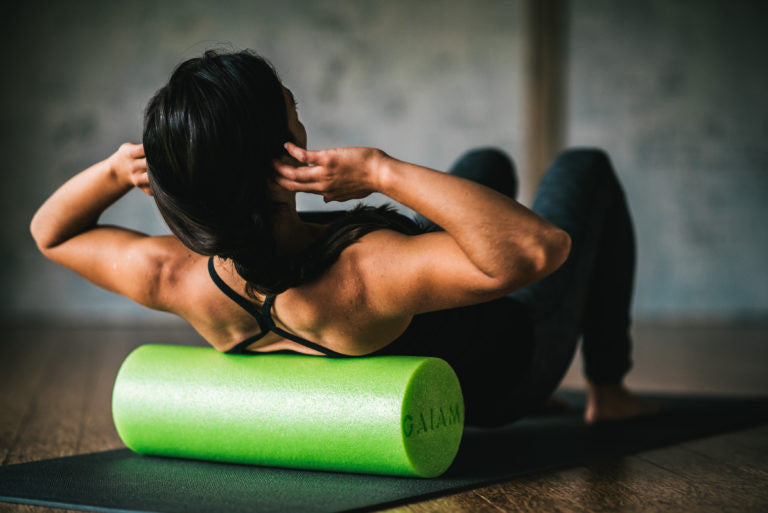Your foam roller likely came with a guide showing you sample exercises, and you can easily find more exercises guides and videos online that are suited to your specific needs. Before you start using your foam roller, though, we thought you’d like to know a little more about it:
Foam rolling is also called self-myofascial release (SMR), which is a medical-sounding way to say “self-massage.” You can use a roller, a ball like a tennis or lacrosse ball, or just your hands; as long as you are applying your bodyweight pressure to trigger points (or the knots that form in your muscles) and the connective tissue, you are practicing SMR.
When you’re experiencing tight muscles or trigger points, it doesn’t mean you're necessarily doing anything wrong, but there could be things you want to pay more attention to in the future. A number of factors could cause this type of pain or discomfort, including incorrect posture, diet, hydration, whether you warmed up properly before exercising, or even stress.
When you use controlled pressure to release trigger points and break up muscle knots, circulation is improved and your normal blood flow should resume. You’ll start to feel normal again, ready to resume your regular exercise regimen.
DOS AND DON’TS:
DO research different foam rollers before deciding which one is best for you. There are different lengths and diameters available; there are even half rollers that lay flat on the floor for improved balance. Most rollers are roughly six inches in diameter; lengths vary from 12 to 36 inches. If you’re rolling your upper back and shoulders, a longer roller ensures you won’t fall off the ends. For single-arm and single-leg rolling, a shorter roller should suffice. A shorter roller is also more convenient to take with you to work or the gym. The density also varies among foam rollers; softer rollers are perfect for beginners, though their lifespan isn’t as long as the denser alternatives.
DO expect a little bit of pain. We’ll be honest; foam rolling hurts a bit. But that’s normal when you’re applying firm pressure directly to a tight or sore muscle. It should be a “good hurt,” though—never unbearable, sharp pain, just a little bit uncomfortable. When you are done with your foam-rolling session, the pain should feel much better. (If a sore area is too painful for even a little pressure, try rolling on the surrounding area first, to help loosen things up.)
DON’T roll directly on a joint or a bone.
DO seek the advice of a professional if you have neck pain; the neck is too sensitive for foam rolling, and you could cause yourself serious injury.
DON’T roll your lower back; this will cause the spine to contract in an effort to protect the spine. For lower back pain, try a tennis or lacrosse ball instead, or ask a professional.
DO roll slowly—no more than one inch per second. Never roll in a fast back-and-forth motion.
DO roll over each trigger point 5-10 times, spending no more than 20-30 seconds on each tender spot.
DON’T roll to the point of excessive soreness; it’s not supposed to be an exercise in pain tolerance. Placing too much sustained pressure on one body part can result it further damage.
DO wait 24-48 hours between foam-rolling sessions. Your body needs time to recover. Stay hydrated, eat healthy foods and get enough rest between sessions.

